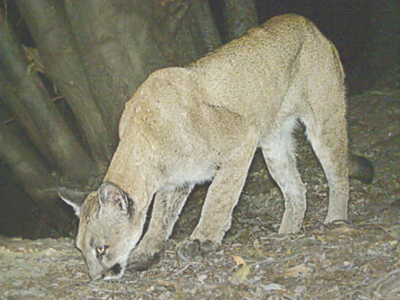
A major, long-term mountain lion research project is now under way in the East Bay.
More than half of California is considered mountain lion habitat. For over 20 years scientists have wanted to study these elusive creatures in the East Bay because it’s interspersed with large areas of public open space lands and highly altered landscapes with high human density. Now a consortium of agencies has pulled together for a long-term study that will focus on the density of mountain lions in the East Bay; their movements and dispersal, corridors and barriers; and population viability in a landscape altered by humans.
“Considering how densely populated the East Bay is, these cats are doing an amazing job of avoiding people,” says East Bay Regional Park District Ecological Services Coordinator Steve Bobzien. Mountain lions are solitary and elusive, and their nature is to avoid humans.
In the first phase of the study, 2012-13, a network of motion-activated cameras was placed in the Sunol and Ohlone Wilderness, a reference site with a relatively low human population. Late in 2013, skilled and experienced teams will begin tracking and capturing mountain lions, taking samples and measurements, and fitting them with GPS collars with accelerometers to track their position, movements, and activity.
Some of the questions that this study will help to answer are: How many lions are there in the various regions of East Bay? How are they moving through the landscape, and avoiding people? What is the actual predation effect on livestock? Data from this study will be analyzed and used by all the partners for education, conservation and management. Knowing more about this species may help direct future land acquisition in East Bay Regional Parks.
Partners in the study are East Bay Regional Park District, the Regional Parks Foundation, Chevron, Felidae Conservation Fund, UC-Berkeley, California Department of Fish & Wildlife, National Geographic, the National Park Service, and the Oakland Zoo.
For tips on staying safe in mountain lion country, see www.dfg.ca.gov/ keepmewild/lion.html.
